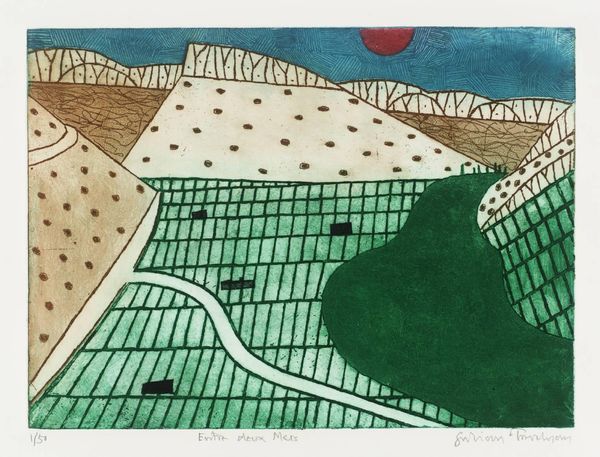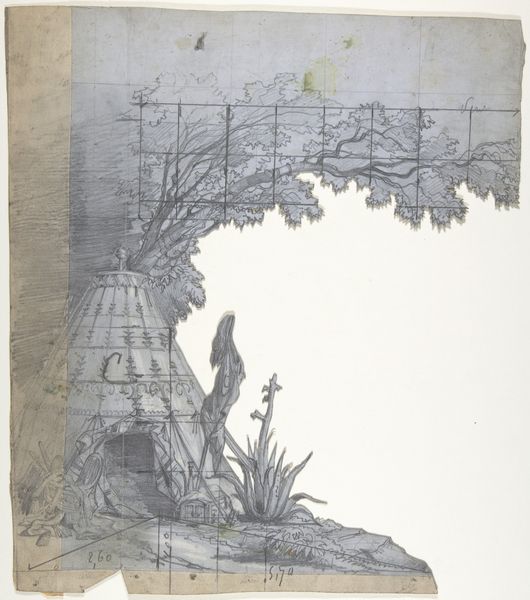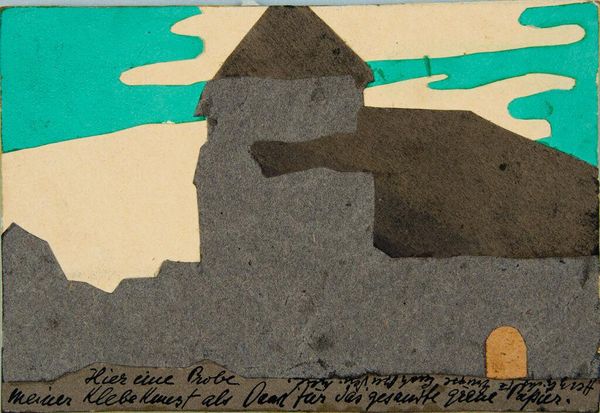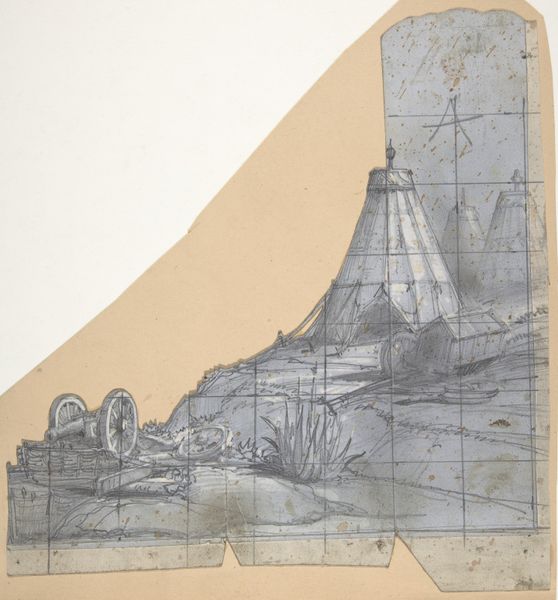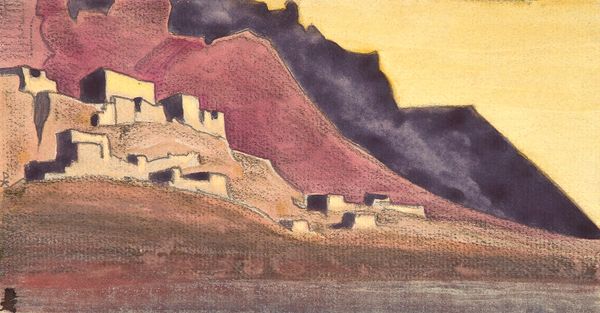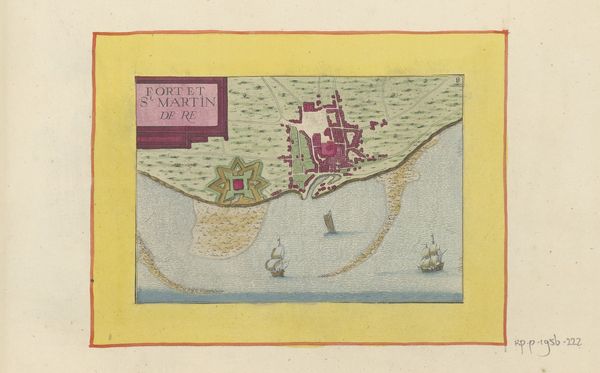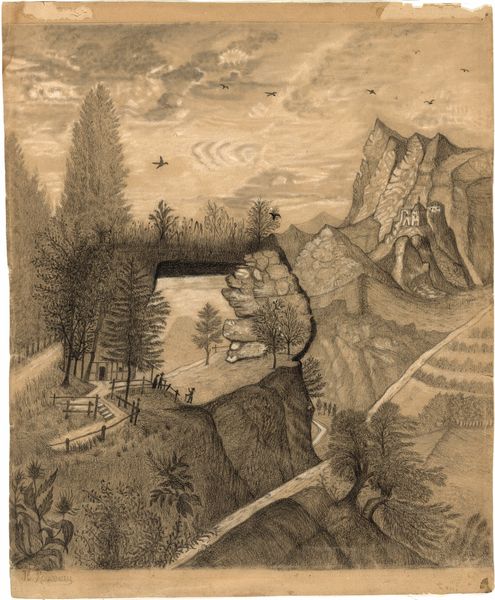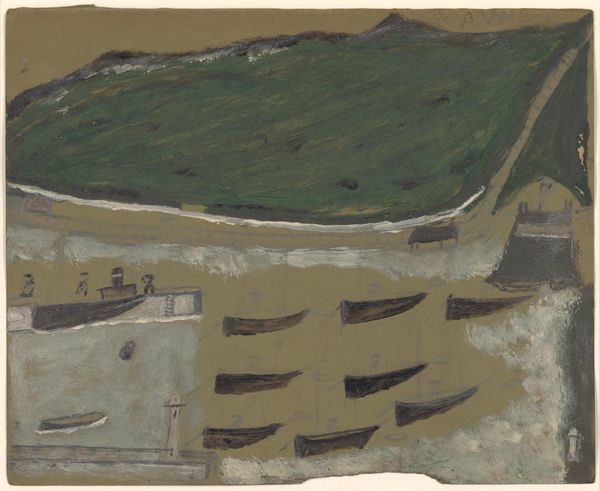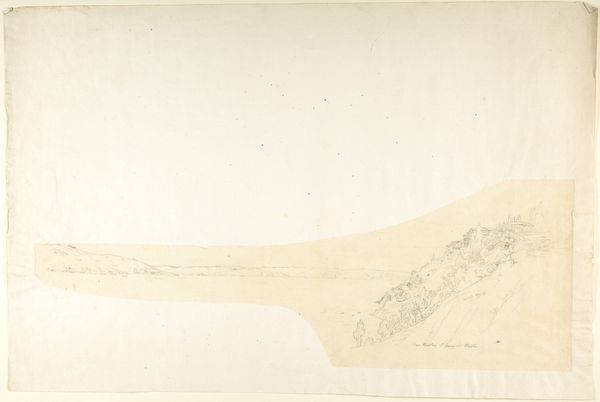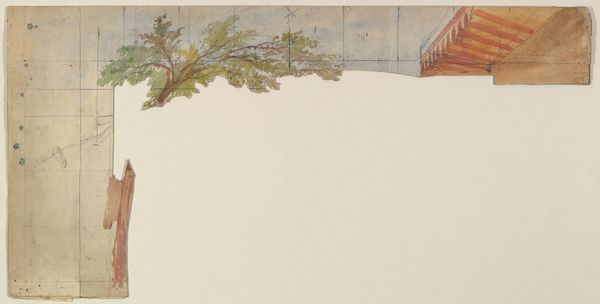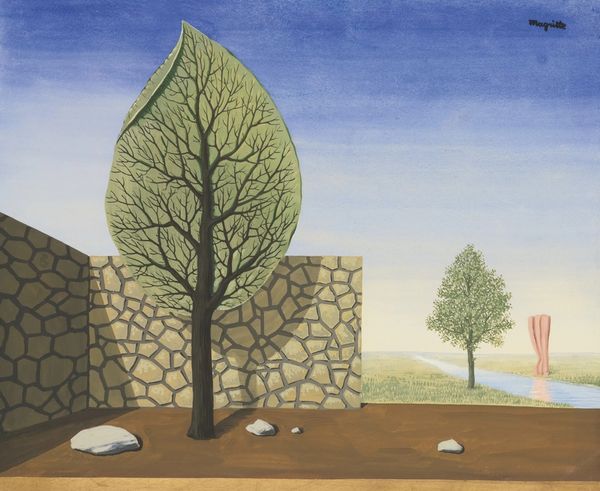
Dimensions: height 360 mm, width 485 mm
Copyright: Rijks Museum: Open Domain
Editor: Here we have "Rotstuin van de Ryoanji," or "Rock Garden of Ryoanji," a woodblock print made sometime between 1925 and 1950 by Kamei Tobei. The subdued palette and simplified shapes create a surprisingly calming, contemplative mood. What do you see in this piece from a historical perspective? Curator: This image encapsulates a particularly interesting intersection of cultural forces. Woodblock printing, traditionally a Japanese art form, gained popularity amongst Western artists in the late 19th and early 20th centuries, influencing Impressionism and Post-Impressionism. However, here, we see a Japanese artist using that same medium to depict a celebrated Japanese cultural site. Editor: So, there's this loop of influence occurring. But what does the garden itself signify? Curator: Exactly. The Ryoan-ji rock garden is a site imbued with cultural meaning and religious contemplation, dating back to the late 15th century. By the 1920s, as Japan navigated modernization and Westernization, depicting these symbols became a way of reinforcing a national identity rooted in tradition. Kamei's print offers a particular, mediated experience of that space. Think about who would buy or display such a print... what values might they hold? Editor: Someone valuing tranquility, Japanese aesthetics, or even a romanticized view of tradition, perhaps. It really speaks to how art objects become cultural markers. Thanks for the perspective! Curator: And to how the very act of viewing is always shaped by its socio-political circumstances. A valuable reminder!
Comments
No comments
Be the first to comment and join the conversation on the ultimate creative platform.
